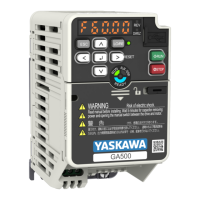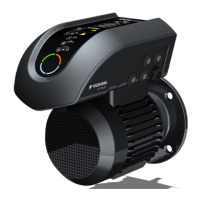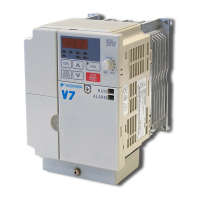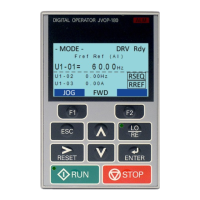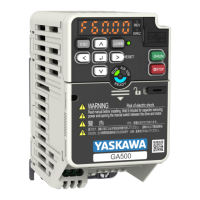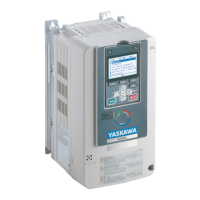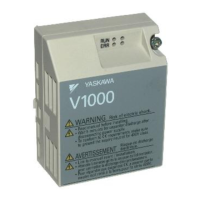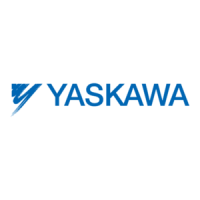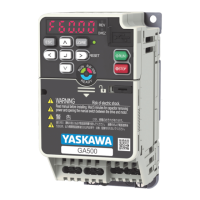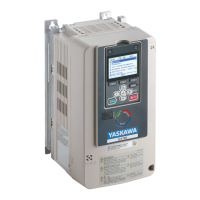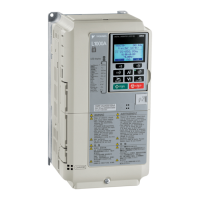Startup Procedure and Test Run
4
4.6 Auto-Tuning
YASKAWA SIEPYAIH6B01A HV600 AC Drive Bypass Technical Reference 169
4.6 Auto-Tuning
Auto-Tuning uses motor characteristics to automatically set parameters for vector control. Think about the type of
motor and the motor installation environment and select the best Auto-Tuning method.
The keypad will show the messages with prompts to input the necessary parameter information.
◆ Auto-Tuning for Induction Motors
This section gives information about Auto-Tuning for induction motors. Auto-Tuning sets motor parameters E1-xx,
E2-xx.
Note:
Do Stationary Auto-Tuning if you cannot do Rotational Auto-Tuning. There can be large differences between the measured results and the
motor characteristics when Auto-Tuning is complete. Examine the parameters for the measured motor characteristics after you do Stationary
Auto-Tuning.
Table 4.5 Types of Auto-Tuning for Induction Motors
Mode Parameter Settings Application Conditions and Benefits
Rotational Auto-Tuning T1-01 = 0
• When you can decouple the motor and load the motor can rotate freely while Auto-
Tuning.
• When operating motors that have fixed output characteristics.
• When it is necessary to use motors that have high-precision control.
• When you cannot decouple the motor and load, but the motor load is less than 30%.
Line-to-Line Resistance T1-01 = 2
• After Auto-Tuning, the wiring distance between the drive and motor changed by 50
m or more.
• When the wiring distance is 50 m or more in the V/f Control mode.
• When the motor output and drive capacity are different.
■ Input Data for Induction Motor Auto-Tuning
To do Auto-Tuning, input data for the items in Table 4.6 that have an "x". Before starting Auto-Tuning, prepare the
motor test report or record the information on the motor nameplate as a reference.
Table 4.6 Input Data for Induction Motor Auto-Tuning
Input Data Parameter Unit
Auto-Tuning Mode
(T1-01 Setting)
Rotational Auto-Tuning
(0)
Line-to-Line Resistance
(2)
Motor Rated Power T1-02 kW x x
Motor Rated Voltage T1-03 V x -
Motor Rated Current T1-04 A x x
Motor Base Frequency T1-05 Hz x -
Number of Motor Poles T1-06 - x -
Motor Base Speed T1-07 min
-1
x -
Motor Iron Loss
T1-11 W x -
◆ Precautions before Auto-Tuning
Examine the topics in this section before you start Auto-Tuning.
■ Prepare for Basic Auto-Tuning
• You must input data from the motor nameplate or motor test report to do Auto-Tuning. Make sure that this data is
available before Auto-Tuning.
• For best performance, make sure that the input supply voltage is equal to or more than the motor rated voltage.
